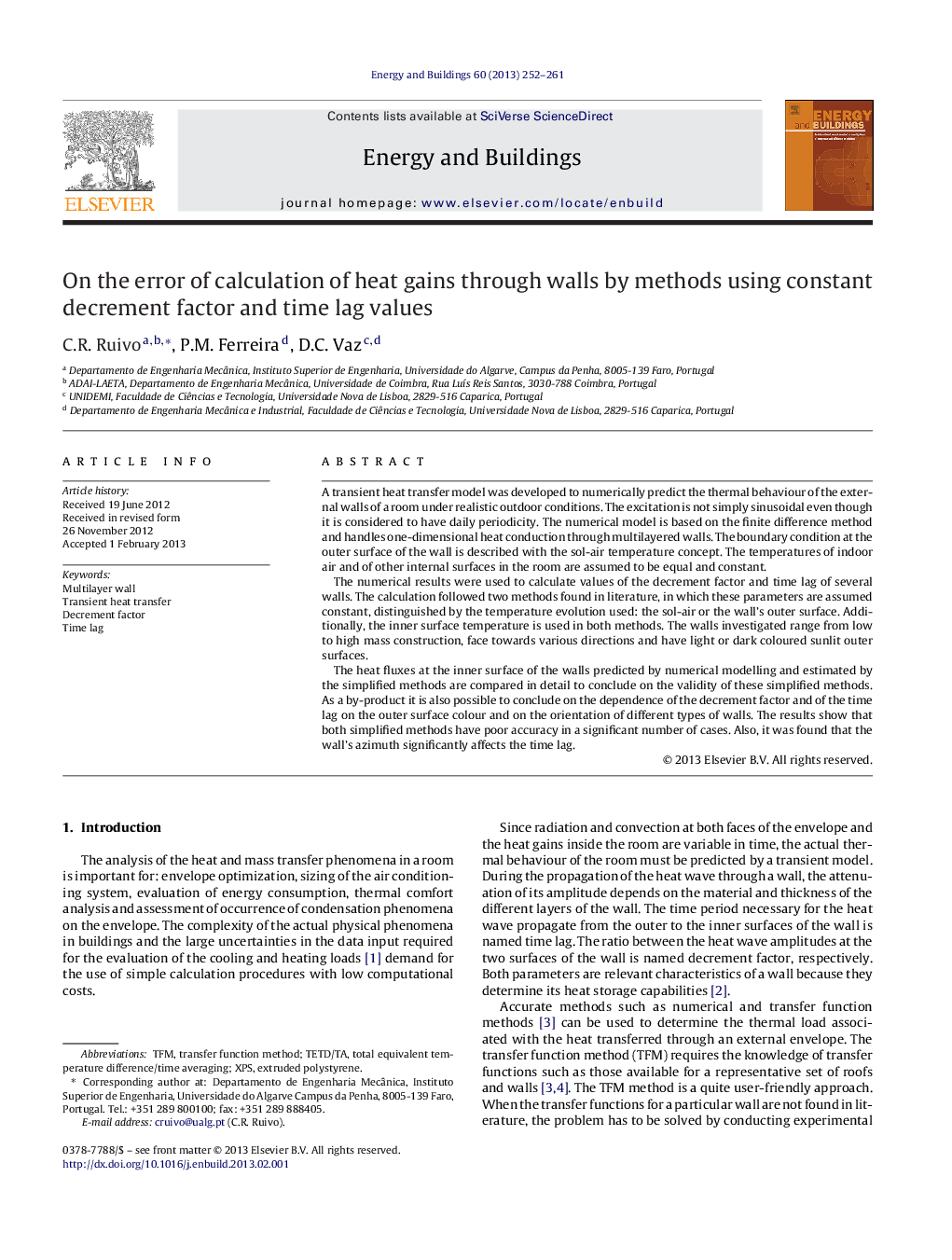| Article ID | Journal | Published Year | Pages | File Type |
|---|---|---|---|---|
| 263354 | Energy and Buildings | 2013 | 10 Pages |
A transient heat transfer model was developed to numerically predict the thermal behaviour of the external walls of a room under realistic outdoor conditions. The excitation is not simply sinusoidal even though it is considered to have daily periodicity. The numerical model is based on the finite difference method and handles one-dimensional heat conduction through multilayered walls. The boundary condition at the outer surface of the wall is described with the sol-air temperature concept. The temperatures of indoor air and of other internal surfaces in the room are assumed to be equal and constant.The numerical results were used to calculate values of the decrement factor and time lag of several walls. The calculation followed two methods found in literature, in which these parameters are assumed constant, distinguished by the temperature evolution used: the sol-air or the wall's outer surface. Additionally, the inner surface temperature is used in both methods. The walls investigated range from low to high mass construction, face towards various directions and have light or dark coloured sunlit outer surfaces.The heat fluxes at the inner surface of the walls predicted by numerical modelling and estimated by the simplified methods are compared in detail to conclude on the validity of these simplified methods. As a by-product it is also possible to conclude on the dependence of the decrement factor and of the time lag on the outer surface colour and on the orientation of different types of walls. The results show that both simplified methods have poor accuracy in a significant number of cases. Also, it was found that the wall's azimuth significantly affects the time lag.
► Numerical simulation of thermal behaviour of external walls of buildings. ► Evaluation of the decrement factor and time lags of external walls. ► Evaluation of total equivalent temperature difference. ► The generalized use of the tested approaches is questionable.
